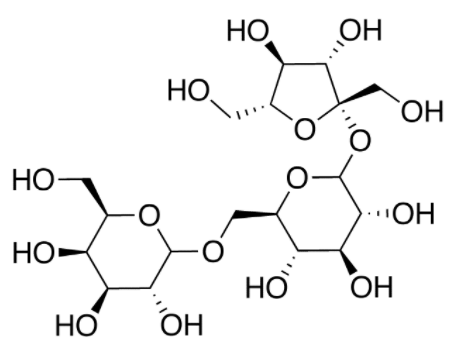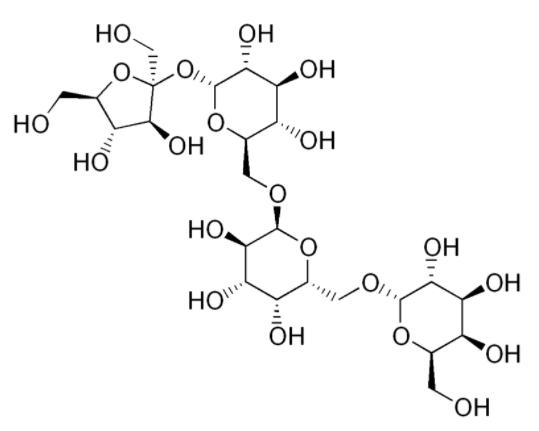2.1D: Polysaccharides
- Page ID
- 1322
Within complex carbohydrates, there are oligosaccharides and polysaccharides. Oligosaccharides (oligo means few) are composed of 3-10 sugar units and polysaccharides contain greater than 10 sugar units.

Figure 2.141: Overview of carbohydrates
Raffinose and stachyose are the most common oligosaccharides. They are found in legumes, onions, broccoli, cabbage, and whole wheat1. The link below shows the raffinose and stachyose content of some plant foods. The structures of the two oligosaccharides are shown below.


Figure 2.142: Structures of raffinose (left) and stachyose (right).
Our digestive system lacks the enzymes necessary to digest these alpha 1-6 glycosidic bonds found in oligosaccharides. As a result, the oligosaccharides are not digested and reach the colon where they are fermented by the bacteria there. Gas is produced as a byproduct of this bacteria fermentation that can lead to flatulence. To combat this problem, Beano® is a popular product that contains an enzyme (alpha-galactosidase) to break down oligosaccharides, thereby preventing them from being used to produce gas.
References & Links
- Byrd-Bredbenner C, Moe G, Beshgetoor D, Berning J. (2009) Wardlaw's perspectives in nutrition. New York, NY: McGraw-Hill.
- en.Wikipedia.org/wiki/File:Raffinose.png
- en.Wikipedia.org/wiki/File:Stachyose.png
Contributors and Attributions
Brian Lindshield (Kansas State University). Content originates from the Human Nutrition (FNDH 400) Flexbook. goo.gl/vOAnR.


